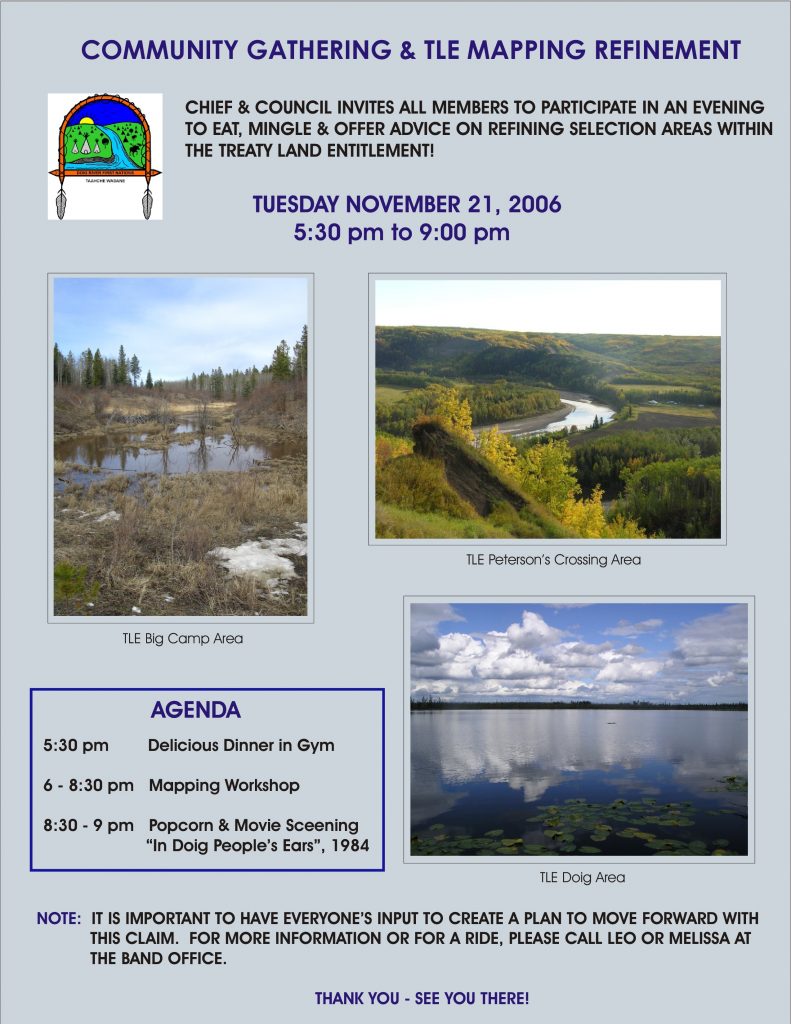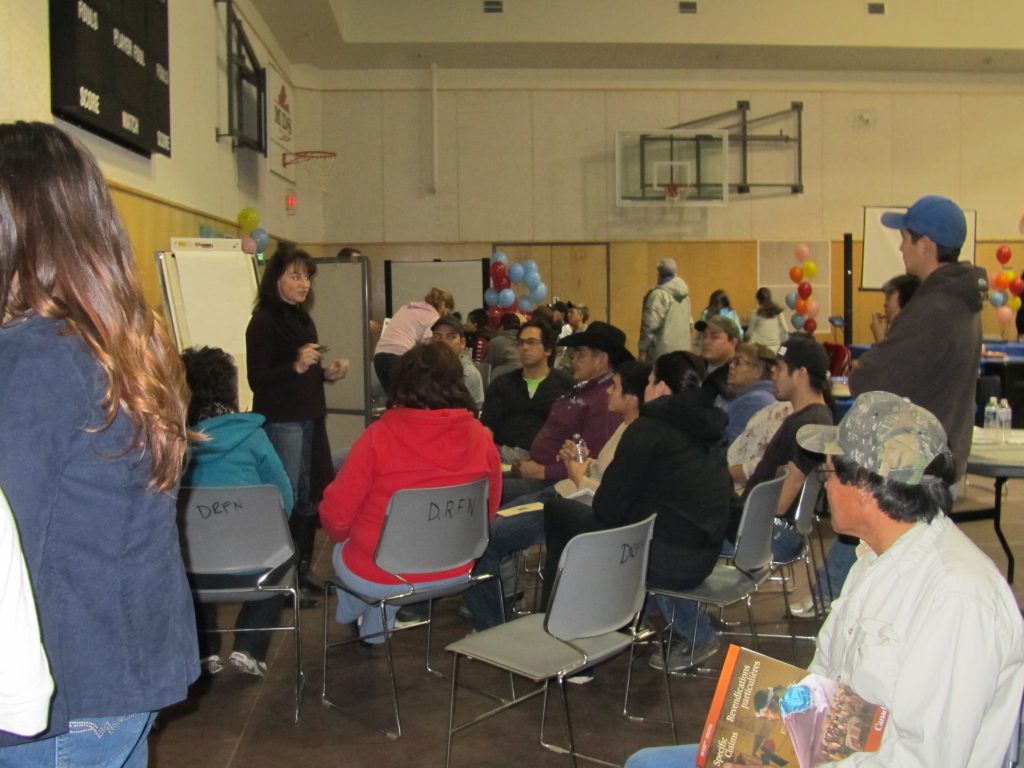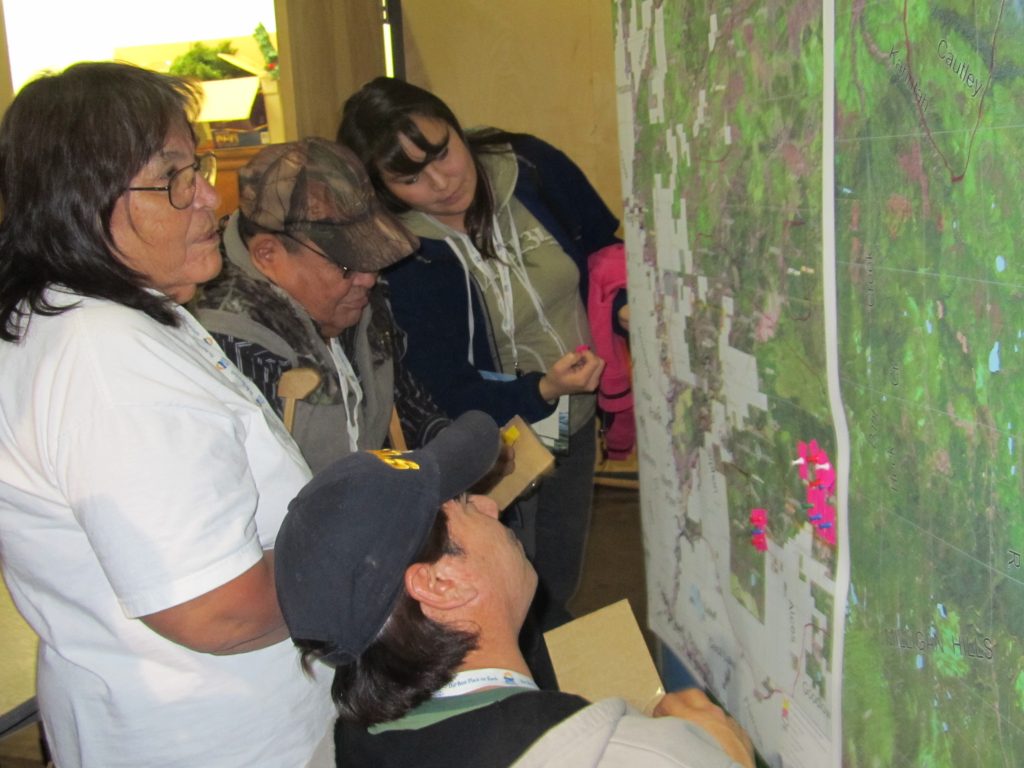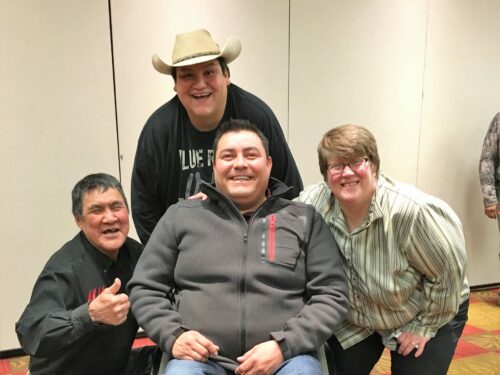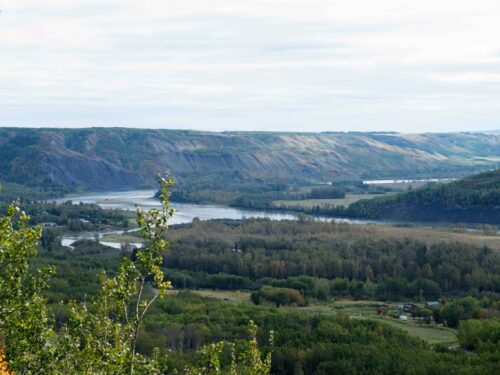When the Fort St. John Beaver Band (Doig and Blueberry River First Nations) adhered to Treaty 8 there was a shortfall of reserve land provided to them in 1916 by the federal government, and as such the Nation has pursued a Treaty Land Entitlement (TLE) claim for the outstanding lands owed. The amount of reserve land they were allocated was calculated based on a formula provided in the Treaty that relied on the population of the band. Unfortunately, when the Crown conducted a count of the members, many were on seasonal rounds, away from the community. As such, the band was never allocated sufficient land, in accordance with the promise of the Treaty.
As a consequence, Doig and Blueberry River First Nations launched a settlement claim in 1999 and since 2004 have been negotiating with Canada to receive the amount of land assured by the Treaty. The negotiations have been complex as the TLE claim settlement includes both monetary compensation and additional reserve lands for each First Nation. Both bands have been working on selecting additional reserve lands and for DRFN, this includes both rural and urban parcels.

TLE Land Selections
The land selection includes 13 rural parcels near the Doig River Reserve including 1,000 acres at Big Camp and 860 acres at Petersen’s Crossing. These are culturally significant aeras that DRFN wishes to preserve and enhance. For the Big Camp parcel, plans include a new camp and day-use area with cabins, fire pits and dry meat racks. There are plans to build new homes and cabins at the Petersen’s Crossing parcel where many of the Nation’s families lived prior to the establishment of the Doig River Reserve. Further, the Nation’s cemetery is also located there. An additional 4 parcels, totaling 8.400 acres around the existing reserve, have also been selected.

Five parcels, covering approximately 4,900 acres have been selected by DRFN at K’ih Tsaa?dze near the Alberta border, which was declared a tribal park by the Nation in 2011. An additional 5,000 acre parcel on the Alberta side of the border was also selected for the park to ensure that sufficient land was secured to accommodate the activities associated with the seasonal rounds of the Nation’s members. This land was historically used by members of the band and with the incursions on the land from industrial development, it is important to the community to preserve natural areas so that both present and future generations can continue their cultural practices.
Learn more about Doig’s TLE process by viewing this PowerPoint presentation by Doig’s legal counsel from The TLE World Cafe, held December 5, 2018.
TLE Update – Signing Completed
Doig River, Blueberry River sign historic Treaty Land Entitlement
Source: Alaska Highway News
Blueberry River and Doig River First Nations gathered Monday to sign a historic treaty land entitlement agreement more than 20 years in the making, settling land debts still owed from the signing of Treaty 8.
Blueberry River and Doig River First Nations gathered Monday to sign a historic treaty land entitlement agreement more than 20 years in the making, settling land debts still owed from the signing of Treaty 8.
Chiefs and councils signed the settlement agreements with each other, the Government of Canada, the Province of British Columbia, and the Province of Alberta, moving their communities forward into a new era. Over 5,000 hectares of land will be returned to the two nations, including land near K’ih Tsaa?dze Tribal Park and Petersen’s Crossing.
Doig Chief Trevor Makadahay said the signing honours elders and councils from generations past, with many not being able to see their work come to fruition. Just a fresh young band councillor in 1999, he says their struggles should never be forgotten.
Read the rest of the story here.
TLE Timeline
Browse through the slideshow below to learn about key events in the journey that led to our request for TLE and the process that was undertaken to achieve it.























